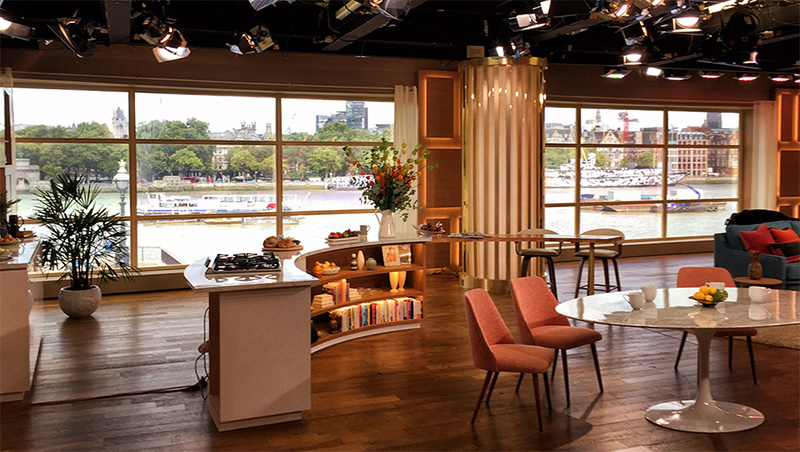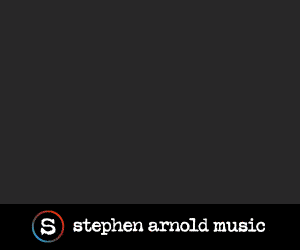Q&A: Using RoscoView to tame natural light in broadcast studios

Weekly insights on the technology, production and business decisions shaping media and broadcast. Free to access. Independent coverage. Unsubscribe anytime.
Many broadcasters avoid real windows for studios because of natural light, which can change throughout the course of a broadcast day and present the constant need for adjustment.
With solutions like Rosco’s RoscoView, which has been widely used by broadcasters around the world for nearly a decade, controlling light becomes as simple as rotating a filter on camera.
We recently had a chance to speak with a Stephen Spendiff, a product manager at Rosco, about the system after its recent use by CBC at the 2016 Summer Olympics.
Broadcasters have always feared natural light. How does RoscoView help “tame the sun” for broadcasters?
RoscoVIEW essentially acts as a variable neutral density inside the windows of a broadcast studio. This allows broadcasters to attenuate the exposure of their windows to the lighting conditions that exist – in real time. With a simple rotation of the RoscoVIEW Camera Filter, the windows can be darkened or lightened to match the lighting conditions outside. RoscoVIEW also allows the camera to view the outside as if it has less light. This helps the studio balance their lighting as their interior light could never have enough lumens to compete with the sun.
What are the practical applications of the product and how has it been implemented?
- Are the windows in your shot always blown out? RoscoVIEW can help properly attenuate the exposure in the window so that the camera can see the view outside.
- RoscoVIEW is variable and allows complete, simple and fast control of the window exposure. Is the sun rising/setting during your morning/evening broadcast? Did the sun just break through the cloudcover? A quick rotation of the RoscoVIEW Camera Filter and your windows are adjusted to the new light levels.
- Need to shoot “Day for Night?” RoscoVIEW enables you to make it appear dark outside to the camera.
- Is your window open to the street? Is a passerby doing something lewd or inappropriate? RoscoVIEW allows you to black out the window.
Talk a bit about how it works? What is necessary to make it work?
RoscoVIEW is a two-part system comprised of wide-width, linear-polarizing RoscoVIEW Panels that are inserted on the camera-side of the window panes, and a matching, linear-polarizing RoscoVIEW Camera Filter that is attached to the lens face.
Each component – the RoscoVIEW Panels and the RoscoVIEW Camera Filter – each natively reduces the light by one stop. As the RoscoVIEW Camera Filter is rotated, the planes of polarization begin to cross and the light inside the windows appears darker for the camera, thus allowing the view through the windows to appear.
It’s worth noting that RoscoVIEW does not prevent sunlight from streaming in through the windows. Cross polarization does not affect the sunbeam or its shadows, so traditional flag masking may still be required to block the sun’s rays.
What kind of investment is required for the system?
Pricing on RoscoVIEW varies based on the needs of the installation. RoscoVIEW installations can run anywhere between $5,000 and $250,000.
Simple installations, such as single panels for mobile studios, are not as expensive as large studios with several large windows, multiple cameras and the need for remote control of the system. Contact your nearest Rosco office to discuss RoscoVIEW pricing for your studio.
How long is installation time?
Like pricing, RoscoVIEW installations will vary greatly depending on the project. Single panel installations can happen in a matter of hours, while multi-panel projects might necessitate weeks. Anyone considering RoscoVIEW for their studio should visit the website: www.rosco.com/roscoview. Contact your nearest Rosco office to request product demo kits and a RoscoVIEW consultation for your studio.
How does it compare to traditional shades or other methods?
Other methods for window control include:
- Rosco Cinegel Neutral Density filters, including materials such as Cinescreen and Roscoscrim. These filters can either be mounted to the window itself, or to a frame that is mounted onto the window.
GAM Windowgrip is a series of Neutral Density filters with a low-tack adhesive that allows studios to adhere the ND directly to the window. - Roscolex Acrylic Panels (aka Hard Gels) are neutral densities designed for quick and easy insertion into the window frame to control the light. Thanks to their rigid nature – they do not have the wrinkle issues that traditional gels and Windowgrip present.
- The RoscoShades system operates much like industrial window shades, but with specialized Rosco neutral density materials inside. Available in manual or motorized configurations, RoscoShades allow up to 4 different shade materials to be inserted into the windows.
In each case, RoscoVIEW offers studios maximum versatility and speed when it comes to changing their exterior light. Studios would need to wait for a break in the broadcast in order to allot enough time to swap out the gels or lower in the proper shade, which could mean a significant amount of airtime with “blown-out” or overly dark windows. RoscoVIEW not only saves labor time because a crew isn’t needed to change the exposure of the window – it also preserves the aesthetic of the set.
RoscoVIEW also saves on interior lighting setup time. Using the other “traditional” window treatments – the studio lighting crew would need to adjust and balance the interior lighting of the set for proper exposure. Because RoscoVIEW’s cross-polarizing technique does not change the amount of light entering the studio and only affects the exposure of the window “in-camera,” the studio lighting isn’t affected and does not need to be adjusted.




tags
lighting design, Rosco, RoscoShades, roscoview
categories
Broadcast Facility, Exclusives, Featured, Set Design, TV Set Design